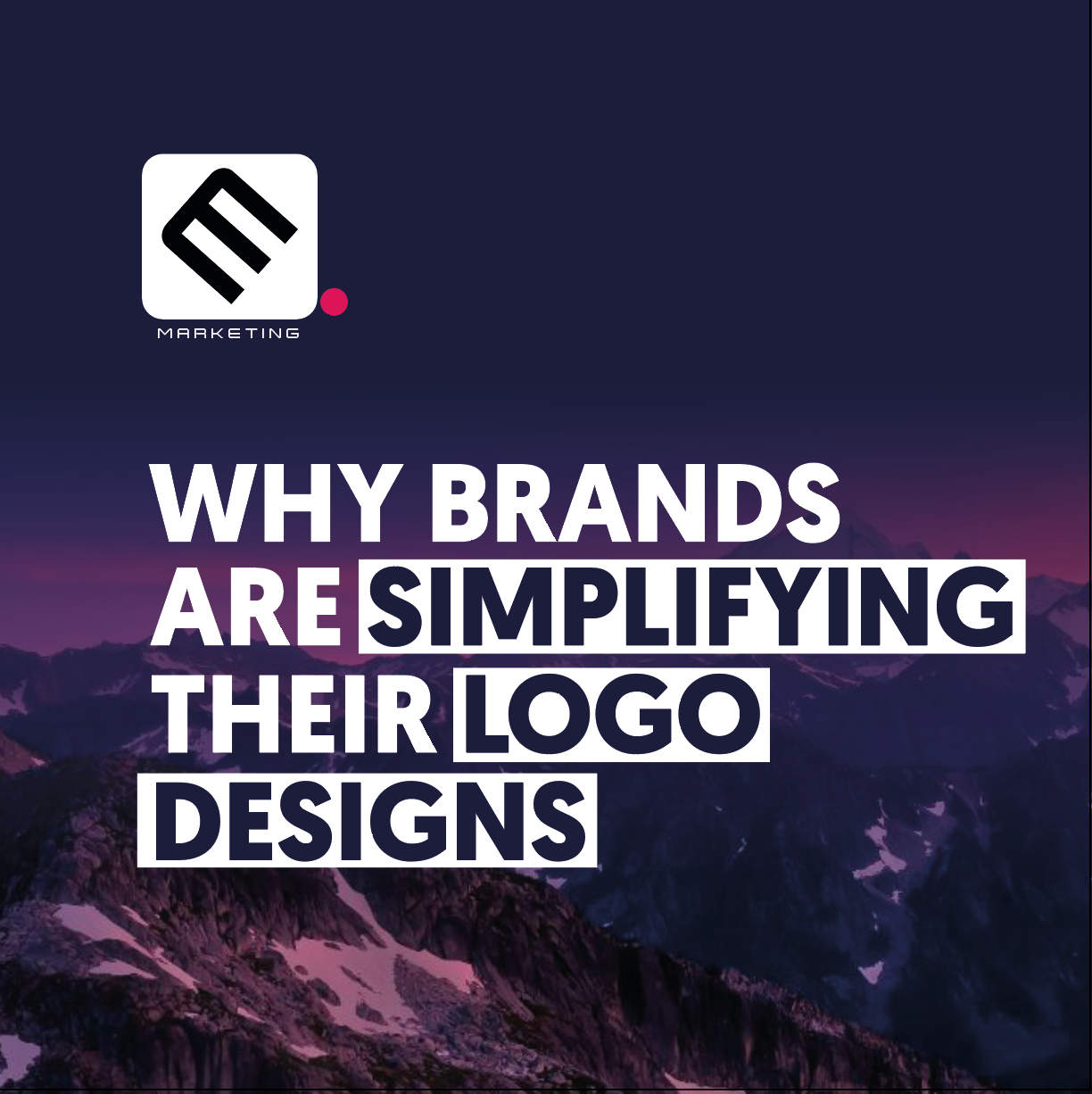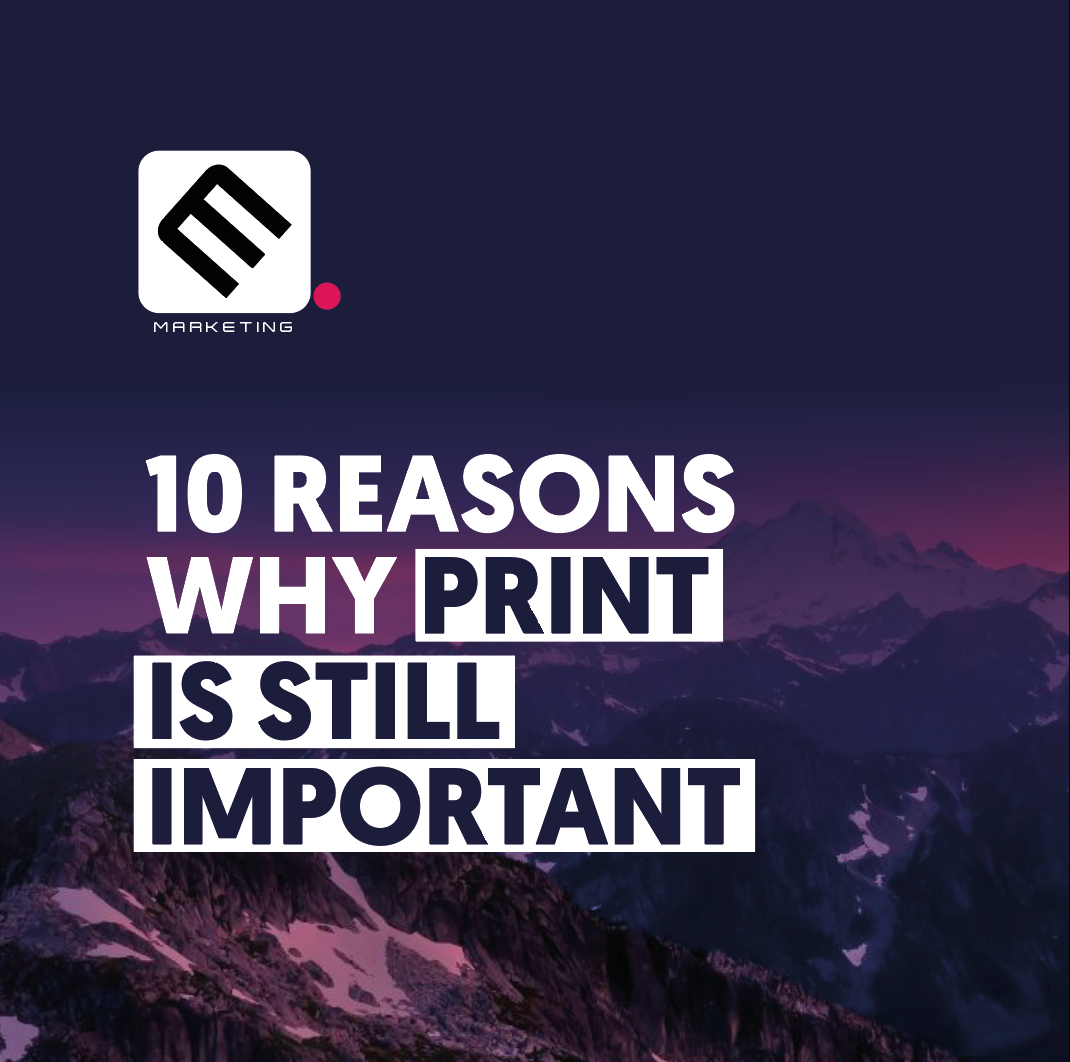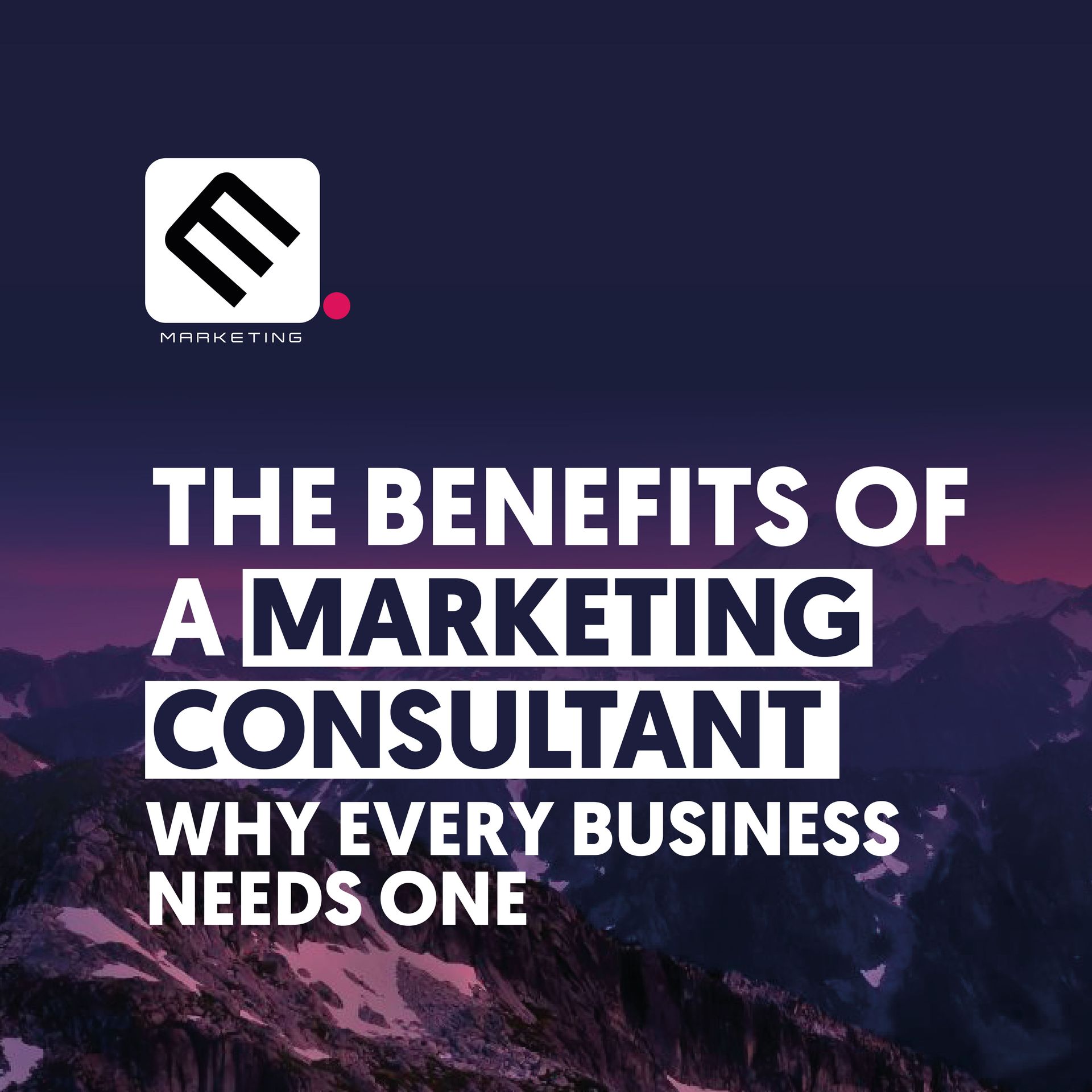Rebranding Done Right: Lessons from Successful Case Studies
Rebranding is more than a new logo or a fresh colour palette; it’s a strategic move that can redefine how a business is perceived, reposition it in the market, and even breathe new life into customer relationships. Done right, it can propel a brand forward. Done poorly, it can confuse audiences and dilute trust.
So, what separates a successful rebrand from one that misses the mark? Let’s look at a mix of case studies, and the lessons they offer for businesses considering their own transformation.
Apple: Simplicity as a Strategy
When Apple was struggling in the late 1990s, its brand was fragmented and unfocused. The “Think Different” campaign, paired with a sleek rebrand, brought clarity and vision. The company simplified its design, unified its identity, and reintroduced itself as a brand that represented innovation, creativity, and user-friendly technology.
Lesson: A rebrand should reflect your company’s purpose and values. Strip away the noise and focus on what makes you unique.
Starbucks: Evolving Without Losing Recognition
In 2011, Starbucks made a bold move by removing the words “Starbucks Coffee” from its logo. Instead of alienating customers, the change worked because the company had built such strong brand recognition that the siren icon alone carried meaning. This move also allowed Starbucks to expand beyond coffee into other products without being boxed in.
Lesson: Rebranding doesn’t mean abandoning your heritage. Evolve in a way that respects what customers already love about you while giving room for growth.
Airbnb: A Logo That Represents Belonging
Airbnb’s 2014 rebrand centred around the concept of “belonging anywhere.” The new logo, the Bélo, was designed to symbolise people, places, love, and community. While initially polarising, the rebrand succeeded because it aligned perfectly with Airbnb’s mission: making travellers feel at home anywhere in the world.
Lesson: Rebranding should tell a story that resonates emotionally with your audience. A logo or tagline isn’t just design, it’s a reflection of the experience you deliver.
John Lewis: From Department Store to “Life Moments” Brand
John Lewis has long been one of the UK’s most trusted retailers, but in 2018 it undertook a rebrand to reposition itself as more than just a department store. The addition of “& Partners” to both John Lewis and Waitrose highlighted the role of its employees and reinforced its people-first ethos. Paired with its much-loved Christmas campaigns, the rebrand emphasised emotional storytelling and human connection.
Lesson: A rebrand doesn’t have to be radical. Sometimes it’s about amplifying your values and making them more visible to your customers.
Burberry: Returning to British Heritage
Burberry, once dismissed as outdated and associated with “chav” culture in the early 2000s, has staged one of the most successful luxury fashion rebrands. By embracing its British heritage, refreshing its visual identity, and investing in digital innovation, Burberry reclaimed its place as a global luxury powerhouse. Today, it’s positioned as a forward-thinking yet quintessentially British brand.
Lesson: A successful rebrand can revive even a struggling reputation. With the right strategy, you can transform negative perceptions into positive associations.
Royal Mail → Consignia → Royal Mail
Not all rebrands succeed. In 2001, Royal Mail rebranded as “Consignia” to reflect its expanding logistics services. The new name was met with confusion, ridicule, and public backlash. Within a year, the company reverted to Royal Mail, proving that abandoning heritage without customer buy-in can be costly.
Lesson: Rebranding must resonate with your audience. If your customers don’t recognise themselves in your new identity, you risk alienating them.
Final Thoughts
Rebranding isn’t about being trendy, it’s about being true to who you are today and where you’re going tomorrow. When done with intention, it can revitalise your business, open new opportunities, and strengthen customer loyalty.
The strongest brands know that change is inevitable. The question is whether you’ll let change happen to you, or shape it yourself!
At Explore, we help businesses shine. Whether you’re refreshing an existing brand or starting from scratch, our team of designers creates professional, on-trend, and distinctive brand identities that you can be proud of. If you’re ready to take the next step in your branding journey, get in touch with us today
- we’d love to help bring your vision to life.

If you look at many well-known brands today, you’ll notice a clear change in how their logos look. Brands like Google, Mastercard, Pepsi, and Burberry have all moved toward cleaner, simpler designs. Logos are flatter, easier to read, and free from unnecessary details. This shift isn’t just about style. It’s about how brands need to work in a digital world. 1. Logos Need to Work on Screens Most people now see brands on phones, apps, and social media - not just on posters or packaging. Logos need to look good on small screens, even as tiny icons. Detailed logos don’t scale well. Small text and fine lines disappear. Simple logos stay clear and recognizable no matter the size. 2. Simple Logos Are Easier to Recognise People scroll quickly online. Brands have very little time to grab attention. Simple logos are easier for the brain to understand and remember. When a logo focuses on just a few strong elements, it becomes more familiar and easier to spot. 3. More Flexible Across Platforms Today, logos appear everywhere - websites, apps, videos, packaging, and social media. They may need to be animated, shown in black and white, or used in dark mode. Simple designs are easier to adapt. They also work better in motion, where clean shapes help animations feel smooth and modern. 4. Simplicity Lasts Longer Highly detailed logos often go out of style quickly. Simple logos tend to feel more timeless, meaning brands don’t need to redesign them as often. By removing extra decoration, brands create logos that can grow and evolve over time. 5. Simple Design Shows Confidence A simple logo can show that a brand is confident and established. It doesn’t need lots of details to stand out. Well-known brands can rely on recognition rather than decoration. The simplicity sends a clear message: the brand knows who it is. 6. Easier to Use Worldwide Big brands operate in many countries and cultures. Simple logos are easier to understand everywhere and are less likely to cause confusion or cultural issues. Clean shapes and clear type work well across different languages and markets. Keeping Logos Unique While simplicity has many benefits, brands need to be careful not to become boring or forgettable. The best simple logos still have something unique - like custom lettering, a special shape, or strong spacing. Simple doesn’t mean plain. It means focused. Final Thoughts For brands, this shift toward simpler logos is a reminder to focus on clarity over decoration. A strong logo isn’t about adding more elements, but about removing what isn’t needed. Brands should think about how their logo works across all touchpoints - especially digital ones - and whether it still feels clear, flexible, and recognisable. This trend also shows the importance of building a strong brand beyond the logo itself. When messaging, tone of voice, and overall design are consistent, the logo doesn’t need to do all the work on its own. Need help creating your brand? Explore can help! Get in touch with our team to get started today.

In the modern day, people are always talking about using social media and digital advertising as platforms to grow a business. They’re completely overlooking the benefits that still surround printed media and, as a result, aren’t meeting their growth potential. If you want to provide your business with a holistic approach to growth, then it’s vital that you also focus on printed media as a way to reach your customers. In this blog, we’re going to explain 10 ways in which printed media can greatly help your business. 1. People still don’t trust digital adverts According to a study carried out by PR Newswire, consumers still don’t trust pop up ads. In fact, only around 25% of consumers trust online pop-up advertisements . Among the 2,400. U.S consumers that took part in the survey, 82% trusted printed ads on newspapers and magazines while another 76% would trust direct mail. Although these numbers are unique to the US, it does help to show just how effective printed advertisements can be versus digital promotional materials. 2. Printed media is more relevant to user interest There are loads of statistics that point towards printed media being more relevant to customers. For example, two-thirds of direct mail is viewed immediately and around 40% of consumers in a study made a purchase in the past three months because of a piece of mail. Compare this to emails which are often ignored or sent immediately to a spam folder, printed media is far more relevant to user interest and has a higher chance of resulting in a sale. 3. Ad blockers are becoming far more common You’ve likely heard of people using ad-blocking software on their computers and mobile devices which allows them to avoid pop-up advertisements and even video ads that are embedded into videos and internet podcasts and music services. This drastically reduces the effectiveness of online advertising which makes print a much more reliable choice. 4. Print Can Target Audiences Effectively If you want to focus on a particular community or geographic area, print is ideal. Direct mail campaigns, door-drop leaflets, and posters allow you to reach your audience with precision. 5. Not everyone in the UK is on the internet, especially older audiences The internet might be a must-use service for most people, but a surprising number of adults don’t actually use the internet. Although 99% of the UK’s population between the ages of 16 and 34 have used the internet, only 56% of adults aged 75 years and over have used the internet. To add to this statistic, 20% of disabled adults have never used the internet and around 8.4% of adults overall have not used the internet. 6. Print Supports Brand Identity Consistent colours, typography, and high-quality finishes reinforce your brand identity. Print gives you full control over how your brand looks and feels in the real world. 7. Print Has a Longer Lifespan One of the most powerful advantages of printed media is its longevity. Unlike digital ads, which disappear the moment someone scrolls past them or closes a browser, printed materials stay in the physical world. Magazines often sit on coffee tables for weeks or months, brochures can remain on office desks long after an event, and high-quality leaflets or catalogues are frequently kept for future reference. This extended visibility means your message continues to work for you long after the initial distribution. Even a simple business card can resurface months later, sparking new opportunities! 8. Printed media isn’t restricted by the GDPR If you operate a business that serves customers online within the EU then you’ve likely had to adjust to the GDPR in order to remain compliant. As you may know, the GDPR can be incredibly limiting and will restrict the types of data you can collect and use. However, the Information Commissioner’s Office (ICO) states that postal marketing doesn’t require consent if it’s aimed at current or past customers or those that have a legitimate interest in your business. This ultimately means that you will not be hindered by regulations such as the GDPR if you utilise printed media as a part of your promotional campaigns. 9. Improve your presence at trade shows Printed media such as banners, posters and business cards can help improve your presence at a trade show. Around 67% of attendees at a trade show represent a new prospect and potentially a customer, so it’s vital to focus on your trade show appearances and maximise your audience. A poor trade show appearance could negatively affect your business and drastically reduce the potential of your business. 10. Print studios offer a wide range of printed media options Although there are plenty of unique ways to advertise your products and services through digital platforms, there’s also a wide variety of printed media options available. From leaflets to business cards and even posters, printed media can be customised to your needs and you’re also able to reuse design elements such as your logo, colour scheme, slogan and copywriting. Need a hand with professionally designed printed marketing materials? We've got you! Get in touch today to get started.

In today’s competitive digital landscape, “good enough” marketing no longer cuts it. Whether you're a growing startup or an established enterprise, staying ahead of shifting consumer behaviour, platforms, and technologies requires more than internal resources alone. That’s where a marketing consultant comes in - not as a replacement for your in-house team, but as a strategic addition for smarter, faster growth. What Does a Marketing Consultant Do? Marketing consultants are strategic specialists who diagnose challenges, identify opportunities, and design data-backed plans to drive business growth. Unlike full-time employees or agencies focused on execution, consultants work across strategy, systems, and scaling, helping businesses to see the big picture. Some main areas where marketing consultants add value include: Marketing audits to identify areas for improvement
Brand positioning and messaging strategy
Channel planning and media optimisation
Go-to-market strategy for new products or services
Internal team training and leadership coaching
In short, they align your business goals with a marketing roadmap and help you execute it with clarity and confidence! Why You Still Need One… Even With a Marketing Team It’s easy to assume that if you already have a marketing manager or a small team, bringing in a consultant might not be needed. However, the truth is that the best internal teams benefit from external expertise. Here’s why: 1. Fresh Perspective Your in-house team is often deep in the day-to-day, making it hard to zoom out. A consultant offers a fresh perspective and an objective insight into what’s working, what’s not, and where opportunities for future growth lie. 2. Strategic Firepower Most in-house teams are heavily focused on execution - getting content out, running campaigns, and managing platforms. Consultants step in to build a strategy, set priorities, and ensure your activities align with real business goals. 3. Team Empowerment (Not Replacement) The right consultant won’t compete with your team - they’ll enhance it. Think of them as your team’s strategic coach: training them, identifying skill gaps, and helping them execute with confidence. What to Look for in a Marketing Consultant Not all consultants are created equal. Look for someone who: • Has experience in your industry or model
• Can show case studies or clear examples of previous success
• Focuses on collaboration over control
Final Thoughts You don’t need to choose between a consultant and your team. The smartest businesses leverage both. If you're ready to bridge the gap between potential and performance, now is the time to bring one in. Here at Explore, Joe brings a wealth of knowledge to the table, providing logical solutions to enhance your business growth. Take advantage of a FREE initial consultation and book your online meeting or a phone call today.


